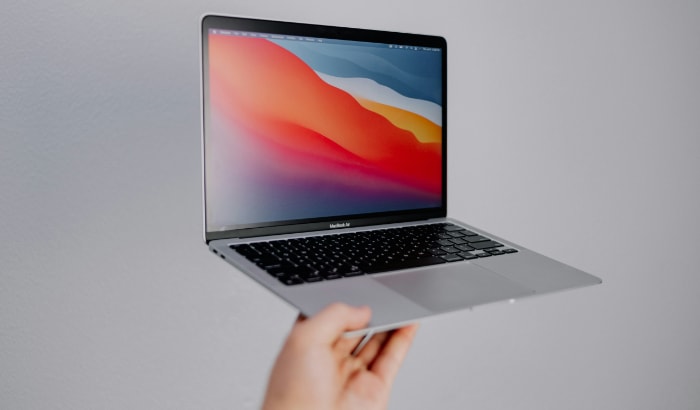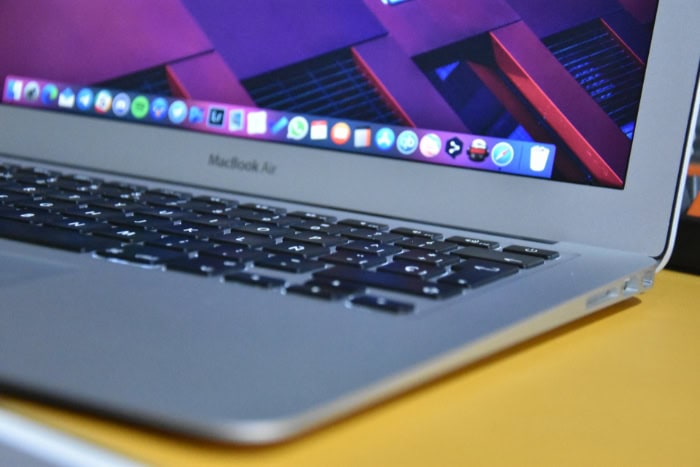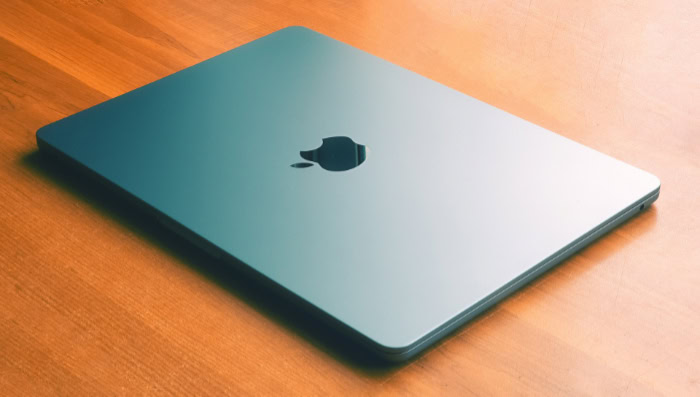MacBook Air Showdown: 8GB vs. 16GB

Choosing the right MacBook Air often comes down to more than just color or storage capacity. One of the most important decisions is selecting the appropriate amount of RAM – 8GB or 16GB.
While it might seem like a small difference on paper, the choice can significantly impact how well your MacBook Air handles tasks, especially when juggling multiple applications or running demanding software.
Understanding RAM and Its Role in Performance
RAM, or Random Access Memory, acts as short-term memory for your computer. Unlike the storage on your hard drive or SSD, which permanently holds your files, RAM temporarily stores data that your computer needs to access quickly.
When you open a program or a file, it's loaded into RAM so that the processor can retrieve the necessary information almost instantly.
The amount of RAM you have determines how many tasks or programs your computer can handle at once without slowing down.
For example, if you have multiple browser tabs open, a music streaming app running, and you're working with a large document, your system will rely on RAM to keep everything running smoothly.
Insufficient RAM can lead to sluggish performance, freezing, or even system crashes when the computer runs out of space to keep all that data easily accessible.
More RAM generally means that your machine can handle more demanding tasks simultaneously. However, adding more RAM than you realistically need might not result in any noticeable performance gains for simple or light tasks.
Therefore, it's important to match your RAM configuration to your typical usage patterns.
RAM in the MacBook Air
Apple’s transition to its own M1 and M2 chipsets has changed how RAM operates in the MacBook Air. Unlike traditional systems where RAM is a separate module, Apple uses something called unified memory.
This is a significant shift from how most other computers manage RAM.
Unified memory in Apple’s M1 and M2 chips means that the RAM is integrated directly with the CPU (Central Processing Unit) and GPU (Graphics Processing Unit).
Rather than having separate pools of memory for different tasks, the unified memory architecture allows all parts of the system—whether it's the processor, graphics, or neural engine—to access the same memory pool.
This results in faster data transfer and improved efficiency because the components don't have to wait for RAM to become available.
This design also makes the MacBook Air more efficient with its memory usage. For instance, an 8GB MacBook Air with an M1 or M2 chip may perform better than an 8GB Windows laptop, because the unified memory architecture allows Apple to optimize how the RAM is allocated and used.
That said, even with these optimizations, the basic principles of computing still apply: the more applications and processes you run at the same time, the more memory you'll need to maintain smooth performance.
Another important difference with unified memory is that it cannot be upgraded. Once you purchase a MacBook Air with a certain amount of RAM, that’s the amount you’ll have for the life of the device.
This makes the initial decision between 8GB and 16GB even more crucial, as you won’t have the option to add more later if you find your system struggling with heavier workloads down the line.
Performance Comparison

The decision between 8GB and 16GB of RAM in the MacBook Air largely comes down to how you use your computer and what kind of tasks you perform regularly.
While Apple’s M1 and M2 chips make efficient use of memory, there are still clear differences in performance when comparing these two configurations, especially as the demand on your system increases.
Everyday Tasks
For typical, everyday tasks like web browsing, document editing, and media consumption, 8GB of RAM is likely enough for most users.
If your daily routine involves opening a few browser tabs, streaming video, answering emails, and working with word processing or spreadsheet applications, an 8GB MacBook Air should handle these without any noticeable slowdowns.
Basic tasks like watching a movie, checking social media, or even light photo editing don’t require a massive amount of memory.
The efficient way in which macOS and the M1/M2 architecture manage RAM means that even with 8GB of memory, your system can handle a reasonable number of active processes without lag.
For casual users, especially students, writers, or anyone who doesn’t need high-performance software, 8GB will likely feel responsive and snappy in day-to-day operations.
However, it’s important to keep in mind that even during light use, it’s easy to push memory limits if you’re someone who likes to keep a lot of browser tabs open or run multiple apps in the background.
Though 8GB is sufficient for most non-power users, those who frequently multitask may start to feel the strain if they try to push the machine beyond its capabilities.
Multitasking and App Usage
When it comes to multitasking, the difference between 8GB and 16GB becomes more noticeable. While 8GB of RAM can support several open applications at once, there are situations where you may start to experience slowdowns.
For example, if you have multiple browser tabs open—especially resource-heavy ones like Google Docs or YouTube—and you’re switching between different apps like a music streaming service, messaging apps, and productivity software, the 8GB configuration may begin to feel sluggish.
macOS is designed to manage memory efficiently, but once your system starts to run low on available RAM, it has to rely on virtual memory—essentially using your SSD to compensate for the lack of sufficient RAM.
While this allows the system to keep running, it can lead to slower performance and potential delays when switching between apps or opening new ones.
With 16GB of RAM, you’ll have much more headroom for multitasking. If you’re the type of user who likes to have dozens of browser tabs open while simultaneously running apps like Photoshop, Slack, and Spotify, you’ll notice a significant difference in how smoothly your system runs.
The additional RAM allows your MacBook Air to handle more processes in the background without having to constantly rely on virtual memory, which means faster app switching, smoother performance, and less waiting for apps to load.
For professionals who need to run several heavy applications at once, such as programmers who work with integrated development environments (IDEs) alongside multiple browser tabs or designers who need to switch between different creative apps, the 16GB option provides a noticeable performance boost that allows for a more fluid workflow.
Resource-Intensive Workflows
The demands of resource-intensive tasks are where the 16GB configuration truly stands out. If your work involves video editing, graphic design, 3D modeling, or programming, the extra RAM becomes essential for maintaining smooth performance.
Applications like Adobe Premiere Pro, Final Cut Pro, and Logic Pro can consume large amounts of memory, especially when dealing with high-resolution video files or complex audio projects.
Video editing, for instance, requires significant memory to handle large files, multiple tracks, and real-time playback of high-resolution footage.
With only 8GB of RAM, your MacBook Air might struggle to keep up when working on longer video projects or when applying multiple effects and transitions.
You may experience choppy playback, longer rendering times, and slower exports. On the other hand, with 16GB of RAM, the system can better handle these large files and complex workflows, allowing for smoother editing, quicker previews, and faster overall performance.
For graphic designers working in apps like Adobe Photoshop or Illustrator, 16GB of RAM can make a significant difference when working with large, multi-layered files.
Tasks such as exporting large images, applying filters, and working with high-resolution assets are far less taxing with the additional memory, making the 16GB MacBook Air a more efficient tool for creative professionals.
Similarly, for developers and programmers, especially those who work with virtual machines or large datasets, the extra memory becomes necessary.
Running multiple virtual environments, compiling large projects, or working with complex datasets can quickly eat up available memory, and the 16GB configuration offers the breathing room needed to keep performance consistent.
Without enough RAM, these tasks can result in slowdowns, crashes, or the need to constantly close applications to free up memory.
Future-Proofing and Longevity Considerations

When investing in a MacBook Air, it’s important to consider how the device will perform not just today, but several years down the line. As software and operating systems evolve, so do their hardware requirements.
Software Demands Over Time
Operating systems, including macOS, are regularly updated to add new features, improve security, and enhance performance. However, these updates often come with increased system requirements as applications become more sophisticated.
Modern software is designed to handle more complex tasks, and as a result, it typically requires more memory to function smoothly.
This trend is expected to continue, meaning that the amount of RAM you choose today could significantly impact how well your MacBook Air runs future versions of macOS and third-party applications.
With 8GB of RAM, the MacBook Air is well-equipped to handle today’s software demands, but there are limits to how far it can stretch as applications grow more memory-hungry.
For basic users who rely on web browsing, email, word processing, and media streaming, 8GB should remain adequate for the foreseeable future.
However, as more advanced applications, especially those that require real-time processing or heavy multitasking, evolve, 8GB may start to feel more restrictive.
Apple’s unified memory architecture does help alleviate some of these concerns since it allows the system to use RAM more efficiently than traditional PCs.
However, it’s still possible that future macOS updates or more advanced software could require more memory to run optimally.
Users who anticipate running newer, more demanding applications in the coming years might find themselves running into performance limitations with 8GB, especially if they plan to keep the device for a long time.
Lifespan of Each Configuration
The amount of RAM in your MacBook Air can directly influence how long the device remains viable for your needs. With 8GB of RAM, the MacBook Air should perform well for several years, especially for light users whose tasks don’t exceed the system’s capabilities.
However, as software continues to advance, 8GB may start to show its limitations sooner, particularly in scenarios involving heavier multitasking or resource-intensive applications.
On the other hand, opting for 16GB of RAM can significantly extend the lifespan of your MacBook Air.
The additional memory provides more breathing room for future software updates and ensures that the device can handle more demanding applications as they evolve.
For professional users or those planning to keep their MacBook Air for more than three to five years, the extra RAM can make a noticeable difference in performance over time, allowing the machine to remain responsive and capable as software becomes increasingly complex.
Since Apple’s unified memory isn’t upgradeable after purchase, choosing 16GB at the outset can be seen as a way to future-proof your MacBook Air.
It helps ensure that you won’t need to replace the device as soon as software demands increase, making the higher RAM option a worthwhile investment for users who plan to keep their laptop for the long term.
Cost vs. Value: Is the Upgrade Worth It?

When choosing between the 8GB and 16GB configurations for the MacBook Air, the cost difference plays a significant role in the decision-making process.
While the performance gains are clear for those opting for more RAM, it’s important to weigh that against the additional expense to determine if the upgrade offers sufficient value for your specific needs.
Price Difference Analysis
The standard MacBook Air with 8GB of RAM is priced competitively, making it an attractive option for budget-conscious buyers who still want a powerful and reliable laptop.
However, upgrading to 16GB of RAM comes with an added cost—typically around $200 at the time of purchase.
This price bump might seem steep for what amounts to a memory upgrade, especially when the base model already performs well for everyday tasks.
For many users, the question then becomes whether the performance benefits of 16GB are worth that extra $200.
Given that Apple’s unified memory architecture allows even an 8GB model to handle tasks more efficiently than traditional systems, the pricing difference can feel less justifiable, particularly for users who don’t regularly push their machines to the limit.
However, for those who plan to use memory-intensive applications or keep their MacBook Air for many years, the extra cost can be seen as an investment in future-proofing (as previously discussed).
The larger RAM capacity ensures that the laptop will remain capable of handling more demanding software and multitasking requirements down the line. Therefore, the price difference is less about immediate performance improvements and more about extending the machine's capabilities over time.
Value for Casual Users vs. Professionals
The value of upgrading to 16GB of RAM largely depends on the type of user you are. For casual users—students, writers, or anyone whose primary activities include web browsing, media streaming, and light productivity tasks—the 8GB configuration is likely more than enough.
The base model provides excellent performance for day-to-day use, and the additional $200 required to upgrade to 16GB may not translate into noticeable benefits for these types of workloads. In this case, the extra expense could be better spent on additional storage or other accessories.
On the other hand, professionals who rely on their MacBook Air for more demanding tasks will almost certainly benefit from the upgrade.
Creative professionals, such as video editors, graphic designers, or photographers, will find the increased RAM invaluable when working with large files or resource-heavy applications.
Similarly, software developers and users who need to run virtual machines or manage complex datasets will experience smoother performance with the 16GB option.
For these users, the added cost of the upgrade is often justified by the smoother and more efficient workflow it enables.
Not only does the extra memory help prevent slowdowns, but it also allows for more flexibility when multitasking, making it easier to run multiple heavy applications simultaneously without performance dips.
In professional environments, where time is money, the upgrade can quickly pay for itself in terms of productivity.
Resale Value Impact
One often overlooked aspect of choosing between the 8GB and 16GB configurations is how it affects the MacBook Air’s resale value.
Apple products, in general, retain their value well in the second-hand market, and RAM configuration is one of the factors that buyers consider when purchasing used devices.
In most cases, a MacBook Air with 16GB of RAM will fetch a higher price on the resale market than an 8GB model.
Buyers looking for used devices are often interested in future-proofing their purchases as well, and models with higher RAM tend to be more desirable for those who want a machine that can handle more demanding tasks.
This added desirability means that not only will you be able to sell your MacBook Air more easily, but you’ll also be able to command a higher price for it.
Additionally, as software becomes more resource-intensive over the years, models with more RAM will hold their relevance longer. This means that a 16GB MacBook Air will likely remain in demand for a longer period of time than the 8GB version, further boosting its resale value.
For users who plan to sell their MacBook in the future, the upgrade to 16GB represents an opportunity to recoup some of the initial investment when it’s time to trade up to a new model.
Use Case Scenarios: Which Model is Best for You?

When deciding between 8GB and 16GB of RAM for your MacBook Air, it’s essential to consider how you plan to use the device. Different users have different requirements, and what may be sufficient for one person could be limiting for another.
Casual Users (Students, Writers, General Use)
For casual users, including students, writers, and those using their MacBook Air for general purposes, the 8GB configuration is often more than sufficient.
If your daily tasks involve light multitasking, such as browsing the web, working on documents, and streaming media, the 8GB model will comfortably meet your needs.
macOS, combined with Apple’s M1 or M2 chips, does an excellent job of optimizing memory usage.
This means that even with 8GB of RAM, the MacBook Air can efficiently handle multiple browser tabs, light photo editing, and word processing without noticeable slowdowns.
For students who might have several apps open at once—such as a web browser, word processor, and music streaming service—the base model should provide a smooth experience.
Writers and those who engage in basic productivity tasks will also find the 8GB MacBook Air more than capable. The machine can handle multiple open documents, email clients, and research tabs without running into RAM limitations.
Unless your workflow involves more intensive applications like video editing or large database management, the base model is likely to provide all the performance you’ll need at a more affordable price point.
Creative Professionals (Video Editors, Designers)
Creative professionals who work on more demanding tasks, such as video editing, graphic design, or motion graphics, will likely benefit from upgrading to the 16GB model.
These workflows often involve working with large files, running complex software, and multitasking between multiple resource-heavy applications.
For example, video editors using Final Cut Pro or Adobe Premiere Pro will find that the extra memory helps when working with high-resolution footage, multiple tracks, and real-time previews.
Similarly, graphic designers working in applications like Adobe Photoshop or Illustrator will notice smoother performance when handling large, multi-layered files.
The 16GB of RAM ensures that the system can efficiently manage multiple open projects, large assets, and complex effects without significant slowdowns.
When applying filters, exporting large files, or switching between creative applications, the extra RAM ensures that the MacBook Air can keep up with the demands of professional work.
Motion graphics artists and 3D designers, who often work with rendering software or animation tools, will also see a clear advantage with the 16GB model.
These tasks are memory-intensive, and the additional RAM allows for faster previews, shorter rendering times, and the ability to manage larger, more complex projects without system lag.
For creative professionals, the extra investment in the 16GB configuration is often well worth it, as it allows for a more fluid, productive workflow without the frustration of running into memory constraints.
Developers and Power Users
Developers and power users typically benefit from having more RAM, particularly when working with resource-hungry applications or running complex workflows.
If you’re a software developer, for example, you might need to run multiple virtual machines, integrated development environments (IDEs), and testing environments simultaneously.
This can quickly consume large amounts of memory, making the 16GB option a better fit for handling these tasks smoothly.
Running virtual machines (VMs) or containers, such as Docker, is especially memory-intensive. Developers often use VMs to test software on different operating systems or to simulate various environments.
The more VMs you run concurrently, the more RAM you’ll need. With the 8GB model, you may start to notice performance bottlenecks if you’re running multiple VMs or other memory-heavy tools at the same time.
Data analysts and scientists who work with large datasets or use applications like MATLAB, R, or Python for data processing will also benefit from the extra memory.
When working with large datasets or performing complex calculations, the additional RAM helps prevent slowdowns, ensuring smoother data manipulation and faster processing times.
For power users who frequently multitask with demanding applications, such as photo and video editing software, virtual machines, or data analysis tools, the 16GB configuration provides a better overall experience.
The additional memory ensures that you won’t experience unexpected slowdowns when working on intensive tasks, allowing for a more efficient and productive workflow.
Conclusion
Choosing between 8GB and 16GB of RAM for the MacBook Air comes down to balancing your current needs with future considerations. For casual users who primarily browse the web, stream media, and work on documents, the 8GB model offers enough performance to get through everyday tasks smoothly.
However, for professionals working with more demanding applications like video editing, graphic design, or coding, the 16GB configuration provides the extra memory needed to handle complex workflows efficiently.
While the 16GB option does come at a higher cost, it can extend the device's lifespan and improve resale value, making it a worthwhile investment for those who expect to push their machine further over time.
Matching the MacBook Air’s RAM configuration with your intended use will ensure you get the best value and performance from your device.


